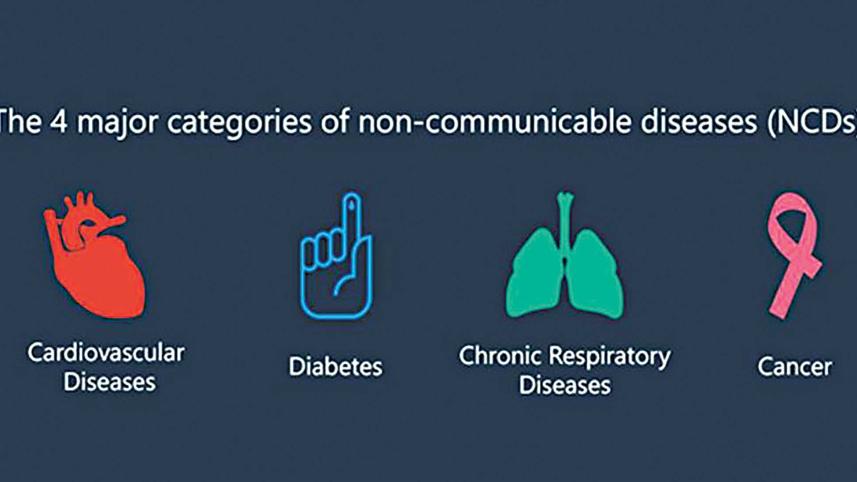Stop the silent killer

Health experts tell us that non-communicable diseases (NCDs) strike silently and kill a large number of people all over the world. According to the World Health Organization (WHO), NCDs kill 41 million people each year, equivalent to 71 percent of all deaths globally. Each year, more than 15 million people die from an NCD between the ages of 30 and 69 years, and 85 percent of these "premature" deaths occur in low- and middle-income countries. Cardiovascular diseases account for most NCD deaths, or 17.9 million people annually, followed by cancers (9.3 million), respiratory diseases (4.1 million), and diabetes (1.5 million). These four groups of diseases account for over 80 percent of all premature NCD deaths.
NCDs have also been identified as a major concern in Bangladesh, needing due attention and intervention. Latest statistics show that about 67 percent of all deaths in the country are caused by NCDs. On top of that, around 20 percent of the population suffer from hypertension, 10 percent from diabetes, and as much as two million people suffer from cancer every year in the country.
In this regard, Bangladesh's health minister said that NCDs were increasing because of changes in lifestyle and diet, obesity, tobacco consumption, environmental pollution, and misuse of medicines. He suggested creating wider awareness among the people so that the diseases could be detected early and treatment could be started immediately. He said this while addressing the first National NCD Conference 2022 virtually, in which WHO Director General Tedros Adhanom Ghebreyesus was also in attendance. The WHO chief mentioned the increasing use of tobacco and unhealthy lifestyle as two major reasons for the growing cases of NCDs. He emphasised taking steps to ensure equitable healthcare services at primary level for those who are suffering from such diseases.
We note that the need for raising awareness at community level has been reiterated by health practitioners and researchers at the conference. Behavioural change through effective communication is essential as a large segment of the population has little knowledge about most NCDs and how to prevent them through improving lifestyle. Delay in consulting a qualified doctor in a proper health facility is one major factor that takes a patient from bad to worse.
We believe there is a health communication department under the Directorate General of Health Services (DGHS), which prepares health communication materials and organises dissemination programmes across the country. The communication experts should be given full support to create greater awareness at the community level to minimise the incidences of NCDs and ensure good health of the citizens.



 For all latest news, follow The Daily Star's Google News channel.
For all latest news, follow The Daily Star's Google News channel.
Comments